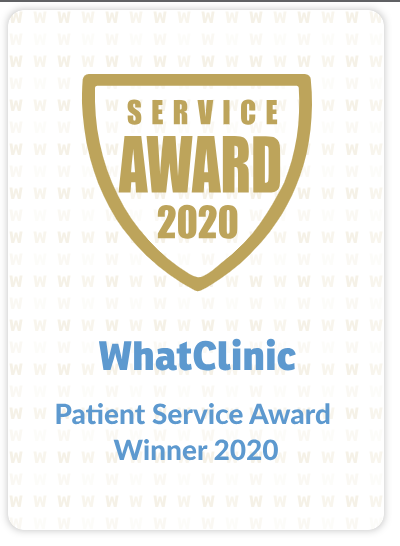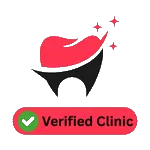When it comes to straightening teeth and achieving a perfect smile, modern orthodontics offers two popular options: traditional braces and Invisalign. Both treatments are highly effective for correcting a range of dental issues, but they differ in terms of appearance, comfort, treatment duration, and lifestyle impact. Choosing the right option depends on several factors, including the severity of the misalignment, personal preferences, and lifestyle needs.
What are Braces?
Traditional braces have been used for decades to correct teeth alignment issues. Braces consist of metal brackets that are bonded to the teeth and connected by wires and elastic bands. The wires are periodically tightened, which gradually shifts the teeth into the desired position over time.
How Braces Work
Braces apply continuous pressure to your teeth over a period of time, slowly moving them in the correct direction. As the teeth shift, the bone changes shape to accommodate the new position. Regular adjustments by an orthodontist are necessary to ensure that the treatment is progressing as planned.
Braces are typically recommended for patients with more complex dental issues, such as:
- Severe crowding
- Gaps between teeth
- Misaligned bites (overbite, underbite, crossbite)
- Rotated or angled teeth
What is Invisalign?
Invisalign is a modern, clear aligner system that offers a discreet alternative to traditional braces. Instead of metal brackets and wires, Invisalign uses custom-made, clear plastic aligners that fit snugly over your teeth. These aligners are removable and need to be replaced every one to two weeks as your teeth gradually move into alignment.
How Invisalign Works
Invisalign treatment starts with a consultation and digital scan of your teeth to create a 3D model of your smile. Using this model, your orthodontist will create a series of aligners, each designed to make slight adjustments to the position of your teeth. You’ll wear each aligner for about 20-22 hours per day, removing them only to eat, drink, brush, and floss. Every one to two weeks, you’ll switch to a new aligner as your teeth continue to shift.
Invisalign is typically recommended for patients with mild to moderate alignment issues, such as:
- Mild crowding
- Minor gaps between teeth
- Mild bite misalignment
Key Differences Between Braces and Invisalign
1. Appearance
- Braces: Braces are more noticeable because they use metal brackets and wires, though ceramic braces (tooth-colored brackets) and lingual braces (braces placed behind the teeth) offer a more discreet option.
- Invisalign: Invisalign is virtually invisible because the aligners are made from clear plastic. Most people won’t even notice you’re wearing them, making Invisalign an excellent choice for those who want a more discreet treatment option.
2. Comfort
- Braces: Metal brackets and wires can cause discomfort, especially after adjustments, as they put pressure on the teeth. Braces may also cause irritation on the inner cheeks and lips due to their metal components.
- Invisalign: Invisalign aligners are made from smooth plastic and generally cause less irritation to the gums and cheeks. However, you may still experience mild discomfort as your teeth shift, particularly when switching to a new aligner.
3. Treatment Duration
- Braces: Treatment with traditional braces typically takes between 18 to 36 months, depending on the complexity of the case. Braces can address more severe dental issues, but they often require a longer treatment time.
- Invisalign: Invisalign treatment usually lasts between 12 to 18 months, though this varies depending on the severity of the misalignment. Invisalign is often faster for cases with mild to moderate alignment issues.
4. Maintenance and Care
- Braces: Braces require extra care to keep them clean. You’ll need to brush carefully around the brackets and wires, and flossing can be challenging. Special tools, such as interdental brushes or floss threaders, can help clean between the teeth and braces. Regular dental check-ups and cleanings are also essential to avoid plaque buildup and tooth decay around the brackets.
- Invisalign: One of the biggest advantages of Invisalign is that the aligners are removable, making it easier to maintain good oral hygiene. You can brush and floss your teeth as usual, and you’ll need to clean the aligners with a soft brush or soak them in a cleaning solution to prevent bacteria buildup.
5. Diet Restrictions
- Braces: With braces, there are certain foods you’ll need to avoid to prevent damaging the brackets or wires. Sticky, hard, or chewy foods—like gum, popcorn, and nuts—are off-limits during treatment.
- Invisalign: Since Invisalign aligners are removable, you can eat whatever you like during treatment. Just make sure to remove the aligners before eating and brush your teeth before putting them back in to avoid trapping food particles against your teeth.
6. Frequency of Visits
- Braces: Patients with braces typically need to visit their orthodontist every 4 to 6 weeks for adjustments.
- Invisalign: With Invisalign, you’ll need to visit your orthodontist less frequently, usually every 6 to 8 weeks, to check on your progress and receive new sets of aligners.
Pros and Cons of Braces
Pros:
- Effective for All Cases: Braces can treat complex cases of misalignment, including severe crowding and bite issues.
- No Responsibility to Remove: Since braces are fixed to your teeth, you don’t have to worry about losing them or forgetting to wear them.
- Multiple Options: There are different types of braces, including metal, ceramic, and lingual braces, offering more flexibility for patients.
Cons:
- Aesthetics: Braces are more noticeable, and many patients, especially adults, may feel self-conscious about their appearance.
- Discomfort: Braces can cause soreness, particularly after adjustments, and metal components may irritate the cheeks and gums.
- Dietary Restrictions: Certain foods must be avoided during treatment to prevent damage to the braces.
- Difficult to Clean: Brushing and flossing with braces require more time and effort to avoid plaque buildup and decay around the brackets.
Pros and Cons of Invisalign
Pros:
- Discreet Appearance: Invisalign aligners are virtually invisible, making them an attractive option for patients who want a discreet treatment.
- Comfort: The smooth plastic aligners are less likely to cause irritation compared to metal brackets.
- Removable: You can remove the aligners to eat, drink, and brush your teeth, making it easier to maintain good oral hygiene and enjoy your favorite foods.
- Fewer Orthodontic Visits: Invisalign typically requires fewer visits to the orthodontist than braces.
Cons:
- Less Effective for Complex Cases: Invisalign may not be suitable for severe misalignment or complex bite issues.
- Requires Discipline: Since the aligners are removable, patients must wear them for at least 20-22 hours a day to achieve the desired results. Forgetting to wear them or losing them can delay progress.
- Cost: Invisalign can be more expensive than traditional braces, depending on the case and location.
Choosing the Right Option: Braces or Invisalign?
When deciding between braces and Invisalign, several factors need to be considered, including the complexity of your dental issues, lifestyle, and personal preferences. Here are some questions to ask yourself:
- How severe is my misalignment? If you have a more complex case, such as a significant bite issue or severely crooked teeth, traditional braces may be the better option.
- Do I care about the appearance of my orthodontic treatment? If you prefer a more discreet treatment, Invisalign is likely the better choice.
- Will I be disciplined enough to wear Invisalign aligners as required? If you’re concerned about remembering to wear your aligners for the recommended 20-22 hours a day, braces may be a more reliable option.
- Am I willing to make adjustments to my diet and oral hygiene routine? Braces require more maintenance and dietary restrictions, while Invisalign offers more flexibility in these areas.
FAQs About Braces and Invisalign
1. Which is more expensive, braces or Invisalign?
The cost of braces and Invisalign varies depending on the complexity of the treatment and your location. In general, Invisalign tends to be more expensive, but many orthodontists offer payment plans to make both options affordable.
2. Can I switch from braces to Invisalign?
In some cases, patients can switch from braces to Invisalign partway through treatment. However, this depends on the progress made and the specific dental issues being treated. Consult your orthodontist to determine if this is an option for you.
3. Do braces or Invisalign hurt?
Both braces and Invisalign can cause mild discomfort as your teeth shift. With braces, you may experience soreness after adjustments, and metal brackets may irritate your cheeks and gums. Invisalign aligners are generally more comfortable but may still cause some pressure when you switch to a new set.
4. How long does it take to see results with braces or Invisalign?
The time it takes to see results varies based on the severity of the misalignment. Braces typically take 18 to 36 months, while Invisalign can produce results in as little as 12 to 18 months for mild to moderate cases.
5. Will I need a retainer after treatment?
Yes, regardless of whether you choose braces or Invisalign, you will likely need to wear a retainer after your treatment to maintain the results. Once your teeth have been shifted into their proper position, a retainer helps to keep them in place and prevents them from gradually moving back to their original alignment. Your orthodontist will provide guidance on how often to wear your retainer.
6. Can Invisalign treat bite issues like overbite or underbite?
Invisalign can correct mild to moderate bite issues, such as overbite, underbite, crossbite, and open bite. However, severe bite issues may require traditional braces, or a combination of braces and other orthodontic treatments. Your orthodontist will assess your specific case to determine the best option.
7. How often do I need to visit the orthodontist with braces or Invisalign?
For braces, you typically need to visit the orthodontist every 4 to 6 weeks for adjustments. With Invisalign, check-ups are usually scheduled every 6 to 8 weeks to monitor your progress and receive new sets of aligners.
8. Can children and teenagers use Invisalign?
Yes, Invisalign is available for teens and some children. Invisalign Teen is a version of the clear aligner system designed specifically for younger patients, with features such as compliance indicators (blue dots that fade when the aligners are worn as required). However, for younger children with developing teeth and jaws, traditional braces may still be the preferred option.
9. What happens if I lose or damage an Invisalign aligner?
If you lose or damage an Invisalign aligner, contact your orthodontist right away. They may instruct you to wear a previous aligner or move on to the next one while a replacement is ordered. It’s important to avoid prolonged gaps in wearing your aligners to prevent delays in your treatment.
Conclusion: Making the Right Choice
Choosing between braces and Invisalign is a significant decision, but it ultimately depends on your specific dental needs, lifestyle, and preferences. Traditional braces remain an excellent choice for patients with more complex dental issues, providing reliable and long-lasting results. However, if aesthetics and comfort are high priorities, Invisalign offers a discreet and flexible alternative that can effectively correct mild to moderate misalignments.
Regardless of which option you choose, the most important thing is to follow your orthodontist’s instructions, maintain good oral hygiene, and stay committed to the treatment plan. Both braces and Invisalign can transform your smile and improve your oral health, leading to a more confident and functional smile in the long run.
For those still unsure or looking for expert advice, consulting with a trusted dental clinic like Dent Ally can be beneficial. Dent Ally, located in Delhi, is one of India’s top-rated dental clinics, offering comprehensive orthodontic treatments, including both braces and Invisalign. Their team of experienced orthodontists can evaluate your case and recommend the most suitable treatment plan based on your specific needs.
To learn more about orthodontic treatments or to schedule a consultation, visit Dent Ally today.





 WhatsApp - Click to Chat
WhatsApp - Click to Chat